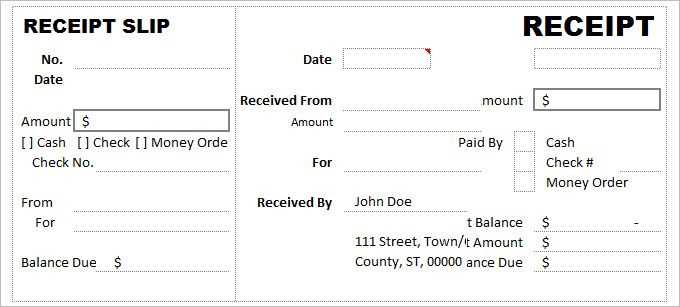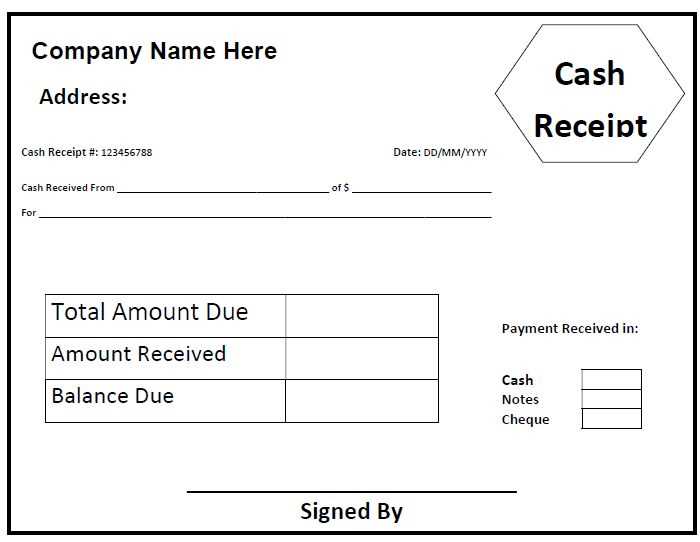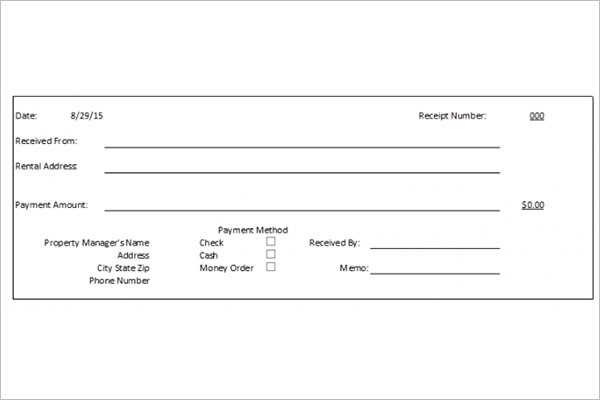
Choose a clear and structured cash receipt template to ensure accurate record-keeping. A well-designed template helps track transactions, provides proof of payment, and simplifies financial reporting. Look for a format that includes essential details such as date, amount, payer and recipient names, payment method, and a unique receipt number.
A printable template should be easy to use and accessible in multiple formats like PDF, Word, or Excel. This flexibility allows for quick printing, digital storage, or customization to meet specific business needs. Consider adding a company logo, tax details, or terms of sale for a professional appearance.
To maintain consistency and accuracy, use the same template for all transactions. This practice reduces errors, improves organization, and ensures compliance with tax or audit requirements. Keep both printed and digital copies for future reference.
Printable Cash Receipt Template Optimization

Ensure accuracy by structuring the receipt with clear sections. Use a simple table format to organize details efficiently:
| Date | Receipt Number | Payer | Amount | Payment Method | Received By |
|---|---|---|---|---|---|
| [MM/DD/YYYY] | [####] | [Full Name] | [$XXX.XX] | [Cash/Card] | [Name/Business] |
Include a notes section for additional details or terms. A signature line enhances credibility:
Notes: [Optional additional information]
Signature: ________________________
Print on standard paper and use consistent formatting to maintain a professional appearance.
Cash Receipt Template Printable
Choose a structured and easy-to-use cash receipt template to keep records clear and organized. A well-designed template should include key details such as date, receipt number, payer’s name, amount received, payment method, and a signature section.
Essential Fields to Include

- Date: Clearly indicate when the transaction took place.
- Receipt Number: Assign a unique identifier for tracking.
- Payer’s Name: Identify who made the payment.
- Amount Received: Specify the exact sum, including currency.
- Payment Method: Note whether it was cash, card, or another form.
- Description: Briefly state what the payment was for.
- Authorized Signature: Confirm authenticity with a signature.
Best Practices for Usage
- Print multiple copies to maintain both digital and physical records.
- Use carbonless copy paper if issuing receipts manually.
- Ensure legibility by using clear fonts and structured formatting.
- Store receipts in a designated folder or digital archive.
A printable cash receipt template simplifies financial tracking and enhances accountability. Customize fields as needed to fit specific business requirements.
Include a clear header with the business name, address, and contact details. This ensures the receipt is easily identifiable and provides a reference if customers need assistance.
Transaction Details

List the date and time of purchase, a unique receipt number, and the payment method. These details help track transactions and resolve disputes efficiently.
Itemized Breakdown
Specify each item purchased, including descriptions, quantities, and unit prices. Display subtotals, applicable taxes, and the total amount to ensure clarity and transparency.
End with a note about return policies, warranty information, or a simple “Thank you for your purchase” message. This enhances customer experience and fosters trust.
Open the template in a text editor or spreadsheet software. Locate the fields for payer details, date, amount, and payment method. Modify these fields to match your business requirements.
Adjust fonts, colors, and logo placement to align with your brand identity. Ensure all sections are clearly labeled and easy to read. If using a digital format, add interactive fields for automated calculations.
Test the template by filling in sample data. Verify alignment, spacing, and functionality before printing or saving. Save a master copy to streamline future customizations.
For sharp, professional receipts, use PDF or DOCX. PDFs lock formatting, ensuring consistency across devices, while DOCX allows easy edits before printing. Both work well for laser and inkjet printers.
Standard Receipt Size

Stick to 3-inch or 2.25-inch widths for thermal printers. These sizes match common register paper, preventing misalignment. For full-page receipts, 8.5 x 11 inches suits standard printers.
Best Layout Options
Use a clear hierarchy: bold headers, aligned columns, and legible fonts like Arial or Times New Roman. Avoid excessive colors to conserve ink. Left-aligned text enhances readability, while tables improve data organization.
For a seamless cash receipt process, start by incorporating clear fields like date, receipt number, payer’s name, amount, and description of goods or services. This ensures both the issuer and recipient can easily reference the transaction. Opt for a clean, structured layout that minimizes confusion–use tables to organize details effectively.
Ensure you include a signature line for the recipient to confirm payment. This adds a layer of formality and security to the transaction. The receipt should be printed on durable paper, especially if it will be stored for long periods.
Customize your template to fit specific needs, whether for personal or business use. Ensure the layout is simple but thorough, covering all relevant details. Avoid excessive information that doesn’t contribute to clarity.


